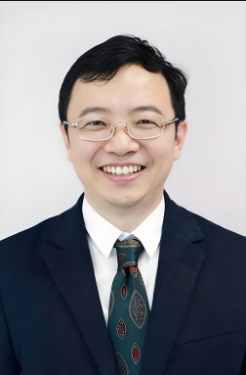Dr. Zhao Haiyin (Meet Top Acupuncture Professor in Shanghai)

Dr. Zhao Haiyin
a chief physician in the Acupuncture Department of Longhua Hospital affiliated with Shanghai University of Traditional Chinese Medicine. She studied under Professor Qin Liangfu, a renowned national TCM expert, and specializes in treating difficult and refractory conditions such as post-stroke sequelae, cervical and lumbar vertebrae diseases, neuropathic pain, chronic cough, and weight abnormalities caused by metabolic disorders.
Ye Wen Ren Yi: Is there a connection between reading philosophy/aesthetics books and practicing acupuncture?
Zhao Haiyin: There’s no direct effect, but the influence is subtle. In clinical practice, I encounter many patients with mild mental disorders, including depression. Such patients tend to be highly introspective and prone to self-doubt. For them, I often use philosophical ideas to encourage them to seek beauty and joy in life. In truth, everyone is a "patient"—doctors included—though some symptoms are less obvious or self-manageable. What matters is how we heal ourselves.
Ye Wen Ren Yi: How has acupuncture evolved in recent years?
Zhao Haiyin: The field has advanced by integrating modern medical research methodologies, which facilitates communication and acceptance among international peers.
Ye Wen Ren Yi: What’s your view on the historical development of Chinese acupuncture techniques?
Zhao Haiyin: The earliest Chinese needle techniques involved the Nine Needles. The evolution of acupuncture is closely tied to regional patient adaptability. For instance, coastal areas or patients with mild conditions prefer minimally invasive, low-pain techniques. In contrast, patients in northern regions or those with severe illnesses prioritize survival and quality of life over procedural invasiveness. Similarly, moxibustion practices like direct moxibustion—burning the skin to induce sterile suppuration and stimulate immunity—reflect historical adaptations. However, such methods are less accepted today due to discomfort. Acupuncture must evolve with the times.
Ye Wen Ren Yi: Do you remember your first time inserting a needle into yourself? Was it difficult?
Zhao Haiyin: My first needle was on myself. In our acupuncture class, we were given a cotton ball and a needle—only by correctly locating the acupoint could we finish the lesson. To learn, you must personally experience the needle sensation (De Qi).
Ye Wen Ren Yi: Is "painless acupuncture" truly painless? How is this achieved?
Zhao Haiyin: It relies on skillful technique: speed, gentleness, and precision. A swift, controlled insertion using wrist strength avoids bending the needle or causing pain. Unlike syringe injections, filiform needles require finesse. Mastery comes only through practice and personal experience.
Ye Wen Ren Yi: What powers the acupuncture needle?
Zhao Haiyin: A combination of wrist and finger strength, adjusted to the muscle tension of specific body areas. Patient relaxation is critical—I often use light conversation to ease tension.
Ye Wen Ren Yi: Some acupuncturists claim "acupoints are everywhere," not limited to the traditional 360 points. How do you interpret this?
Zhao Haiyin: This view is both right and wrong. For example, Ashi points (tender spots) are used for localized issues like muscle injuries or nerve inflammation, regardless of classical meridians. However, internal disorders like stomach pain require precise acupoints (e.g., Zusanli ST-36). Techniques like encirclement needling for shingles focus on the affected area, not meridians. Treatment must be disease-specific, not generalized.
Ye Wen Ren Yi: What conditions do you specialize in treating?
Zhao Haiyin: I wouldn’t say "specialize," but I see higher efficacy in gastrointestinal disorders. For unexplained bloating—attributed to qi stagnation in TCM—acupuncture offers a simpler solution than herbal medicine. For ulcerative conditions, I prioritize herbs with acupuncture as adjunct therapy.
Ye Wen Ren Yi: Which diseases are suitable for acupuncture?
Zhao Haiyin: The WHO has long recommended acupuncture for 43 conditions spanning internal medicine, surgery, and ENT.
Ye Wen Ren Yi: A tiny needle can yield miraculous effects.
Zhao Haiyin: Indeed! Once, a woman sought acupuncture for weight loss but had undiagnosed polycystic ovary syndrome. From a TCM perspective, her dampness obstructing the middle jiao and uterus resolved through treatment, restoring endocrine and reproductive health. Acupuncture’s effects are multi-target and systemic.
Ye Wen Ren Yi: How many acupoints do you typically use in a session?
Zhao Haiyin: Around ten. For fatigue or deficiency, I emphasize the Spleen-Stomach theory—strengthening digestion to ensure nutrient absorption, the foundation of healing.
Ye Wen Ren Yi: What distinguishes acupuncturists from TCM internal medicine doctors?
Zhao Haiyin: We spend more time with patients. Within three sentences, I gauge their personality and unspoken concerns. Tailoring communication builds trust—the same words elicit different reactions depending on the person.
Ye Wen Ren Yi: Do you still maintain study habits?
Zhao Haiyin: Lifelong learning is essential. Classics like The Yellow Emperor’s Classic of Acupuncture, Great Compendium of Acupuncture, and Huangdi Neijing are mandatory. My students must also master anatomy and neurology—two-thirds of acupuncture patients have musculoskeletal or nervous system issues.
Ye Wen Ren Yi: Are you happy as an acupuncturist?
Zhao Haiyin: Very. Immediate patient improvements are my greatest reward. Yet pressure arises when asked, "How long until I’m cured?" For chronic issues like cervical spondylosis, outcomes depend on lifestyle factors—how long they stare at phones or lift heavy objects daily. I can’t control their habits, and that uncertainty weighs on me.
Ye Wen Ren Yi: What do you do in your free time?
Zhao Haiyin: I read and appreciate calligraphy or paintings. These quiet moments soothe my mind.

